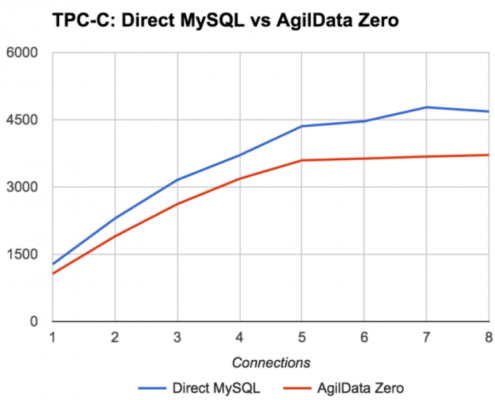 https://www.codefutures.com/wp-content/uploads/2022/01/Google-Cloud-SQL.png
630
1200
danny
/wp-content/uploads/2021/12/Logo_light.png
danny2021-07-20 21:41:002022-01-24 23:26:43Migrate to the cloud with zero downtime with dbShards and Google Cloud SQL
https://www.codefutures.com/wp-content/uploads/2022/01/Google-Cloud-SQL.png
630
1200
danny
/wp-content/uploads/2021/12/Logo_light.png
danny2021-07-20 21:41:002022-01-24 23:26:43Migrate to the cloud with zero downtime with dbShards and Google Cloud SQLEvery SaaS company, at some phase, is going to look for ways to improve. After all, even high-powered developers and C-suite executives are only human. Inefficiencies and redundancies are practically inevitable. To make things as smooth as possible, it helps to go back to the basics and look at the whole process from start to finish.
The basics of SaaS development
SaaS, or software as a service, is a business model that allows the customer remote access to certain software without them needing to run it on their hardware. SaaS development, therefore, has three main parts that need to be continually built and refined. One part is the customer experience – what the customer sees when they log in and how the software is delivered to them. Another part is the software itself, running behind the scenes on a remote server. The final piece of the puzzle is the delivery method, entailing things like sandboxing, network and server specifics, and integration with third-party services like frontends or payment services. All of these factors have to come together to create a successful SaaS application, and it can be daunting.
SaaS application development, at its core, is the struggle to unite these elements and manage the endpoints in such a way that things can be easily changed, tested, and rolled out piecemeal as needed. A successful team, therefore, will synergize by assigning clear role boundaries, having a goal in mind for each commit, and keeping things simple and easy to follow. There are various methods that different SaaS companies employ, and some companies even see fit to leave parts of the operation to third parties.
Addressing SaaS customer needs
With SaaS being such a wide field, it has a wide audience. Google Stadia has a wildly different user base from the likes of Salesforce and Mailchimp, while Lumen5 serves an entirely different set of customers. While addressing customer needs will ultimately come down to knowing your audience, there are a few core tenets that are common across applications. They can be crystallized in three golden rules for SaaS development – keep things agile, minimize downtime, and make the customer’s life as easy as possible.
UI design and service integration are normally front and center, especially in B2B applications. The aforementioned Salesforce, by way of example, is extensible with various plug-and-play APIs, allowing SaaS developers and users to customize their experience. Staggered backups are the name of the game when it comes to preventing downtime; even if a commit causes issues, as long as a backup is present and the server is still working, the update can be sandboxed for diagnosis and troubleshooting while customers continue using the old version. This also plays into agility; a SaaS application that’s well documented and has backups on hand is easy to experiment with..
Naturally, customer success can take many different forms, and a clear vision of what it should look like in full swing will be vital to keeping a flourishing operation. At the core, you should be looking for customers who are happy with how your product and teamwork into their vision, engaged in the generation of updated ideas, and able to overcome small-scale errors on their own in most cases. A user-friendly interface, a comprehensive onboarding process, responsive client relations, and meaningful analytics are the cornerstones of customer success in any enterprise, and this goes double for SaaS application development. These considerations have to be baked into every step of your development cycle.
What does a typical SaaS development process look like?
Like any other development cycle, it all starts with one of two things – a useful product idea, or a customer pain point that needs to be fixed. Where SaaS veers away from typical development is in its multi-pronged approach from there. Whereas a typical software application has to be developed with just a backend and UI, a SaaS application also needs to consider delivery, and be developed from the ground up according to the three key tenets.
The start of the development cycle is a testament to the power of SaaS as a concept; the responsibility for providing the requisite hardware power and network capabilities is taken out of customers’ hands as the idea is fleshed out. During this period, investors, architects, front-end staff, and any applicable executives should all be involved in calculating risk and brainstorming design decisions. Once a clear vision of what a SaaS application should do and on what scale is in place, the actual development can begin.
The second phase of planning is finding or building a platform. The right serving platform will provide easy ways to extend your application, recover from any issues, prevent downtime, and serve your application to your entire projected customer base without any hiccups. Building a cloud platform from the ground up can be a herculean task, but these days, it’s largely unnecessary. Third-party cloud platforms from Google, Amazon, and Microsoft are ready-made to host and serve whatever SaaS applications you may have in mind. In many cases, using them at almost any customer scale is cheaper than building and managing your platform and servers.
From here, SaaS development moves into what is often the longest phase – actual application development. Variables exist, such as platform choice, build environment, and team composition, but no matter how you approach the building, this is the most important phase. Herein, application functions are coded by software architects, put into the platform, and put behind a UI. This phase also includes internal testing, troubleshooting, third-party service integration, and fleshing out how backups, recovery, and security will work.
Once that phase is finished, the process moves into the deployment phase. Here, the build is rolled out in its final, customer-facing form. Final internal testing beyond the development team, or dogfooding, usually takes place here. Once the SaaS application is ready to hit customers, things fall into the hands of customer experience teams such as marketing and client relations. These departments will monitor the customer experience and report any issues, while those responsible for development and maintenance watch the backend for any behaviors that did not show during the development phase. If the software meets with customer success and a minimum of issues, the cycle restarts as the next feature, optimization, or enhancement begins preparation.
The entire process can be clunky, and issues can arise. Some of the most common problems involve security, third-party payment integration, and GDPR compliance. Naturally, keeping things easily customizable and extendable can also be a challenge, especially if the development team is doing things from the ground up rather than using a ready-made platform. On top of all of that, SaaS application development has to include considerations for keeping downtime as low as possible. Depending on the type of application and customer demands, there are cases where nothing less than absolutely zero downtime is acceptable.
Best practices for SaaS application development
Like any industry, SaaS has several industry-wide best practices that have been found, tested, and agreed upon over time. Many of these best practices come from industry giants and can help you to streamline development and minimize challenges at any stage and scale.
One of the most important industry practices is to build for extendibility and adaptability from the ground up. This means using standard architectures and API toolsets for your custom-built environment or using pre-built tool kits that boast compatibility with those. This will make it easy for you to integrate third-party services, and if appropriate, will make it that much easier for other companies to integrate your SaaS product into theirs.
Tying into the above point, another industry best practice is to use microservices. Plugging a piece of the puzzle into each function rather than having a single cohesive stack helps to avoid larger issues by isolating causes when something goes wrong. This will also allow you to adapt endpoints in the core application, make changes as needed, and customize each service in ways that you couldn’t if the entire application stack had to be in one language or made with one toolset.
Multi-tenant architecture on the server end is a great way to prevent privilege and utilization headaches in the future. You can do that by either running a single instance of your SaaS application with multiple databases or by sandboxing multiple instances and customizing security settings, to allow them to run and pull data simultaneously. How you implement that would ultimately depend on what kind of SaaS application you’re building. While a single instance with multiple databases may work fine for a remote faxing service, such an approach would tank performance (and thus user experience) in a cloud gaming service.
Security, regulatory compliance, and scalability are all things that are affected by platform choice and build environment and should be built into any SaaS development process from the first step. This especially is true in the era of the GDPR and multiple EU countries adopting ‘Right To Be Forgotten’ laws. You can avoid headaches later by managing privileges, compartmentalizing databases as they’re being built, and choosing a platform that is in itself highly secure and easy to scale up in both per-client performance and overall data storage and handling.
Customer success is key to continued business and organic expansion. This concept should be shared across your entire team, from top to bottom, and should season every move in the SaaS development process. Customer success efforts should be both proactive and reactive, including onboarding, integration, and ongoing support. There are some resources to guide you in this all-important consideration, such as this deep dive from HelpScout.
User-friendliness is vital, from a design standpoint, but it’s only part of the equation when it comes to another gold standard – self-service. End users will inevitably run into problems, and you want them to be able to solve those problems on their own as often as possible. Saving yourself the kind of time and resources it would take to solve customers’ issues and keep them happy is well worth the upfront investment.
To create an ideal self-service system, you’ll need three components – robust documentation worded in a way that end-users can understand, unique and specific error codes that users can research on their own, and an agile framework that can either be fixed with ease if something breaks or is programmed to roll back to a backup on its own if it encounters an error. You want to choose third-party partners for things like payments that also follow these rules. This, in most cases, sidesteps having your people fumble to help customers with software that they didn’t build.
Building a successful SaaS development team
While most steps of the SaaS development process can be outsourced, there are instances where it pays to put in the work to assemble a team to handle one or more parts of the process. For the most part, the ground rules for assembling and utilizing such a team mirror HR tenets that direct the formation of any team.
A good team in this space needs three types of people – backend staff like coders and network gurus, marketing and client relations staff, and executive leadership to keep the vision coherent and ensure everybody is on the same page. With these three forces working in concert, a clear and unified vision of the end product will guide you through the development process.
A team with synergy is a team with a shared vision and at least a little chemistry. Recruiting efforts should begin with finding people who believe in the vision and have common knowledge and experience bases to prevent team members from confusing one another. While the entire team does not need to be experts in all aspects of development and ongoing maintenance, the process can suffer when communication breaks down. This is usually the result of people from wildly different spheres coming together, with one or more parties lacking adequate deep knowledge of SaaS application development.
Finding the right SaaS development partners
While a ground-up approach with a full team can aid flexibility and agility, there are many cases where it makes more sense to bring in a consultant or company with specific experience to handle part of the process for you. With the SaaS space projected for explosive growth in the next decade, there is no shortage of development partners offering a full-stack solution. Should you choose that route, you’ll have to find a partner who is uniquely suited to the process, vision, and market that you’ve chosen for your specific SaaS application.
With such a vast space to play in, it can be difficult to pin down the right development partner for your needs. Some focus on development, and others on user experience and customer success. Full-stack help, from top to bottom, is usually best trusted to experienced companies that can bring your idea to life. CodeFutures is one such company.
While it’s not hard to find a full-stack SaaS company these days, the ocean of options is a double-edged sword. Companies with serious pedigree and a long list of package options are a good place to start. These are two areas where CodeFutures boasts a competitive edge. They’ve worked with big names like FedEx, Disney, and HP, to name a few.
CodeFutures has packages ranging from helping with a single step in the process, all the way up to taking the reins and holding fast to your direction and vision for as long as you like. They can jump in and support existing operations just as easily as they can help you begin a new business or project, and they have remote staff available around the clock for collaboration and monitoring.
There are, of course, other trusted names out there. MOJOLAB and DevSquad are prominent in the space and offer many of the same features as their competitors, including CodeFutures. As with any external partnership, comparing features, checking out reviews, and chatting up customers and company representatives is the only way to guarantee you’ve chosen the right fit for your needs. Depending on your resources and endgame plan, pricing and scalability should also be taken into consideration.
The ideal SaaS development process
While each development cycle is going to vary, as with any other space, SaaS is a unique animal. It’s no stretch to say that the right optimizations, the right mindset, and the right people in the right places can make all the difference between IPO and early bankruptcy. That said, what should a perfect dev cycle look like?
From the beginning, conceptualization is going to center on customer experience and ongoing success. As the concept is built out and eventually spread out to other people and perhaps third parties, keeping development agile and the platform error-proof should take center stage. Integration of microservices, both in your builds and in third-party service implementations, will ensure that one error will not bring your whole operation to a grinding halt. Constant testing and monitoring, both before and after the customer rollout, will allow your team to keep a handle on any issues that arise and spot areas that can be improved, streamlined, or in some cases, automated.
The end result
No matter what your idea or business may be, the goal is always continued profit, at the core. With a good team and good partners besides you, your SaaS application should be easy to extend and maintain. Contact with your customer base should be constant and productive, and will usually result in long-term fixes or ideas for future additions.
Bringing a partner into the mix will take some of the load off of your team, or help you get things off the ground without worrying about building and maintaining your team. Going this route, you should be looking for constant reporting on tangible metrics for performance, growth, and customer satisfaction. In the end, as long as you’re keeping an eye on those three things and building for the customer and market from the start, it’s hard to make a grave misstep.



